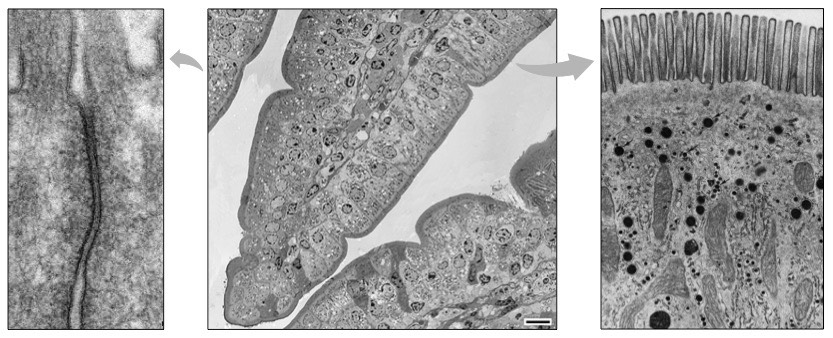![]()
Understanding:
• The structure of cells of the epithelium of the villi is adapted to the absorption of food
Once digested food has passed through the stomach, it enters the small intestine for absorption into the blood
- The small intestine also releases digestive enzymes to ensure the complete hydrolysis of food molecules
The inner epithelial lining of the small intestine is highly folded into finger-like projections called villi (singular: villus)
- Many villi will protrude into the intestinal lumen, greatly increasing the available surface area for material absorption
Features of Villi
Intestinal villi contain several structural features which facilitate the absorption of digestive products:
- Microvilli – Ruffling of epithelial membrane further increases surface area
- Rich blood supply – Dense capillary network rapidly transports absorbed products
- Single layer epithelium – Minimises diffusion distance between lumen and blood
- Lacteals – Absorbs lipids from the intestine into the lymphatic system
- Intestinal glands – Exocrine pits (crypts of Lieberkuhn) release digestive juices
- Membrane proteins – Facilitates transport of digested materials into epithelial cells
Mnemonic: MR SLIM
Features of Intestinal Villi

![]()
Skill:
• Identification of villus epithelium cells that absorb digested food from electron micrographs
The epithelial lining of villi contains several structural features which optimise its capacity to absorb digested materials:
Tight Junctions
- Occluding associations between the plasma membrane of two adjacent cells, creating an impermeable barrier
- They keep digestive fluids separated from tissues and maintain a concentration gradient by ensuring one-way movement
Microvilli
- Microvilli borders significantly increase surface area of the plasma membrane (>100×), allowing for more absorption to occur
- The membrane will be embedded with immobilised digestive enzymes and channel proteins to assist in material uptake
Mitochondria
- Epithelial cells of intestinal villi will possess large numbers of mitochondria to provide ATP for active transport mechanisms
- ATP may be required for primary active transport (against gradient), secondary active transport (co-transport) or pinocytosis
Pinocytotic Vesicles
- Pinocytosis (‘cell-drinking’) is the non-specific uptake of fluids and dissolved solutes (a quick way to translocate in bulk)
- These materials will be ingested via the breaking and reforming of the membrane and hence contained within a vesicle
Electron Micrograph of Villus Epithelium

Structure: Pinocytotic Vesicles Tight Junction Microvilli Mitochondria All
